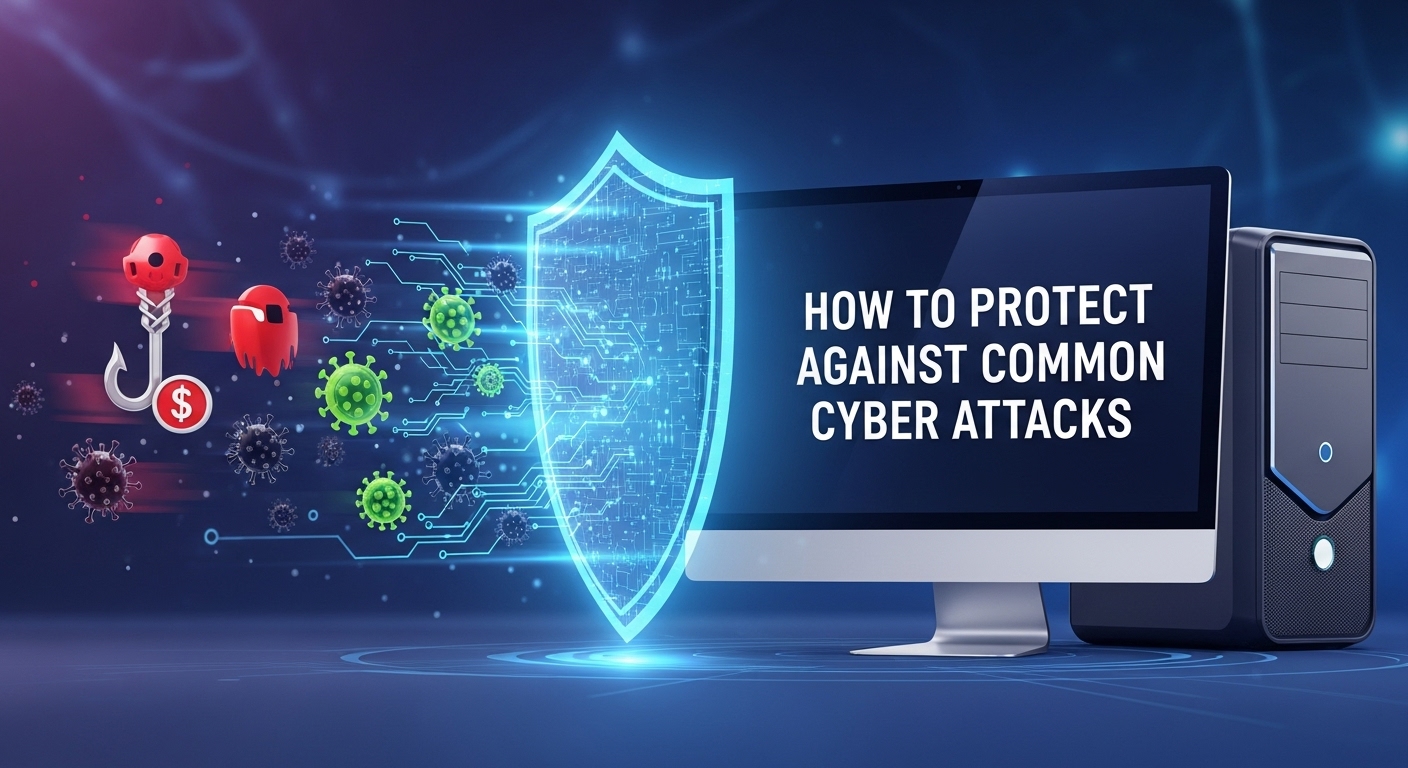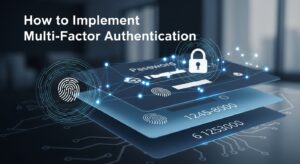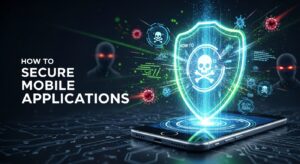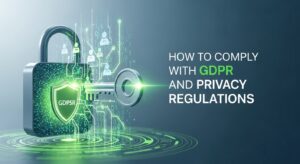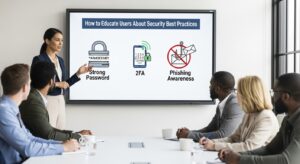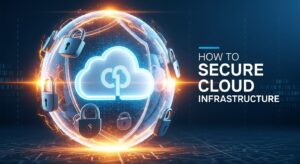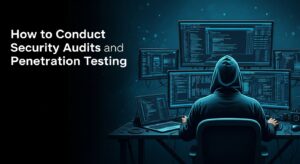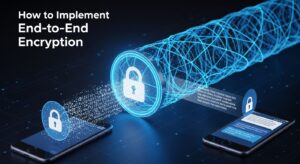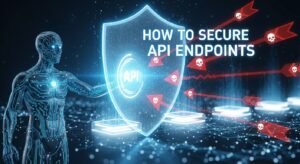When it comes to cybersecurity, the question isn’t whether you’ll face a cyber attack—it’s when. To protect against common cyber attacks, organizations and individuals must adopt a proactive, multi-layered security approach that addresses the most prevalent threats in today’s digital landscape.
The cybersecurity threat landscape has evolved dramatically, with attacks becoming more sophisticated and frequent. According to recent industry reports, cyber attacks increased by over 38% in 2024, making it crucial for everyone to understand how to defend against these threats effectively.
Understanding the Current Cyber Threat Landscape
Before diving into protection strategies, let’s examine what we’re defending against. The most common cyber attacks include phishing, ransomware, malware infections, social engineering, and distributed denial-of-service (DDoS) attacks. Each presents unique challenges and requires specific defensive measures to protect against common cyber attacks.
Cybercriminals have become increasingly organized, often operating like legitimate businesses with customer service departments, money-back guarantees, and sophisticated attack tools. This professionalization of cybercrime means that traditional security measures alone are no longer sufficient.
1. Implement Strong Authentication and Access Controls
The first line of defense to protect against common cyber attacks involves robust authentication mechanisms. Multi-factor authentication (MFA) has proven to block over 99.9% of automated attacks, making it one of the most effective security measures available.
Essential Authentication Practices:
- Multi-Factor Authentication (MFA): Enable MFA on all accounts, especially those containing sensitive information. This typically involves something you know (password), something you have (phone or token), and something you are (biometric data).
- Strong Password Policies: Implement passwords that are at least 12 characters long, contain a mix of uppercase and lowercase letters, numbers, and special characters. Consider using passphrases instead of complex passwords for better memorability and security.
- Zero Trust Architecture: Adopt a “never trust, always verify” approach. This means continuously validating every user and device attempting to access your network, regardless of their location or previous access history.
Regular access reviews ensure that employees only have access to the resources they need for their current roles. Remove access immediately when employees change positions or leave the organization.
2. Keep Systems Updated and Patch Management
Unpatched systems represent one of the most common entry points for cybercriminals. To effectively protect against common cyber attacks, maintaining current software versions and security patches is absolutely critical.
Comprehensive Update Strategy:
- Automated Patch Management: Implement systems that automatically download and install security updates for operating systems, applications, and firmware. This reduces the window of vulnerability between patch release and implementation.
- Vulnerability Scanning: Regularly scan your network for known vulnerabilities using tools like Nessus or OpenVAS. These scans help identify systems that require immediate attention.
- Asset Inventory Management: Maintain a comprehensive inventory of all hardware and software assets. You can’t protect what you don’t know exists, making this inventory crucial for effective security management.
Consider establishing a patch testing environment to evaluate updates before deploying them to production systems. This helps prevent patches from causing system instability while still maintaining security.
3. Employee Education and Security Awareness Training
Human error remains the leading cause of successful cyber attacks, making education a cornerstone strategy to protect against common cyber attacks. Well-trained employees become your strongest defense against social engineering and phishing attempts.
Comprehensive Training Program Elements:
- Phishing Simulation Exercises: Conduct regular simulated phishing campaigns to test employee awareness and provide immediate feedback. Companies using phishing simulations report up to 70% reduction in successful phishing attempts.
- Security Awareness Workshops: Hold quarterly workshops covering current threat trends, safe computing practices, and incident reporting procedures. Make these interactive and relevant to employees’ daily work activities.
- Clear Security Policies: Develop and communicate clear, understandable security policies. Employees should know exactly what’s expected of them and the consequences of non-compliance.
- Incident Reporting Culture: Create an environment where employees feel comfortable reporting suspicious activities without fear of punishment. Quick reporting can prevent small incidents from becoming major breaches.
Training Component | Frequency | Key Topics |
Phishing Simulations | Monthly | Email recognition, reporting procedures |
Security Workshops | Quarterly | Current threats, best practices |
Policy Reviews | Annually | Updated procedures, compliance requirements |
Incident Response Drills | Bi-annually | Response procedures, communication protocols |
4. Deploy Advanced Endpoint Protection and Network Security
Modern endpoint protection goes far beyond traditional antivirus software. To protect against common cyber attacks, organizations need comprehensive solutions that can detect, prevent, and respond to sophisticated threats in real-time.
Multi-Layered Security Architecture:
- Next-Generation Antivirus (NGAV): Deploy solutions that use machine learning and behavioral analysis to detect previously unknown threats. Traditional signature-based antivirus only catches known malware, while NGAV can identify suspicious behavior patterns.
- Endpoint Detection and Response (EDR): Implement EDR solutions that provide continuous monitoring and automated response capabilities. These tools can isolate infected systems, terminate malicious processes, and collect forensic evidence automatically.
- Network Segmentation: Divide your network into smaller segments to limit the spread of potential attacks. Critical systems should be isolated from general user networks, and guest networks should be completely separate from business systems.
- Firewall Configuration: Properly configure next-generation firewalls with intrusion prevention systems (IPS) and web filtering capabilities. Regular rule reviews ensure that firewall configurations remain effective and don’t create unnecessary security gaps.
Consider implementing Security Information and Event Management (SIEM) systems to centralize log collection and analysis. SIEM platforms like Splunk or IBM QRadar can help detect patterns indicative of advanced persistent threats.
5. Establish Robust Backup and Incident Response Plans
Even with the best preventive measures, some attacks may succeed. Having comprehensive backup and incident response plans ensures you can quickly recover and minimize damage when attacks occur. This preparation is essential to protect against common cyber attacks and their aftermath.
Comprehensive Recovery Strategy:
- 3-2-1 Backup Rule: Maintain three copies of critical data, stored on two different media types, with one copy stored off-site. This approach ensures data availability even if primary systems are compromised.
- Regular Backup Testing: Schedule monthly restoration tests to verify backup integrity and recovery procedures. Untested backups are often discovered to be corrupted or incomplete when they’re needed most.
- Incident Response Team: Establish a dedicated team with clearly defined roles and responsibilities. This team should include representatives from IT, legal, communications, and executive leadership.
- Communication Protocols: Develop pre-approved communication templates for different types of incidents. This preparation enables rapid, consistent communication with stakeholders, customers, and regulatory bodies.
- Tabletop Exercises: Conduct regular scenario-based exercises to test your incident response procedures. These exercises help identify gaps in your plans and ensure team members understand their roles during actual incidents.
Recovery Time Objective (RTO) and Recovery Point Objective (RPO) metrics should be established for all critical systems. These metrics define how quickly systems must be restored and how much data loss is acceptable, guiding your backup and recovery investments.
Emerging Threats and Future Considerations
The cybersecurity landscape continues evolving, with new threats emerging regularly. Artificial intelligence-powered attacks, supply chain compromises, and cloud security challenges represent growing concerns that security professionals must address to protect against common cyber attacks.
- AI-Enhanced Attacks: Cybercriminals increasingly use artificial intelligence to create more convincing phishing emails, generate deepfake content for social engineering, and automate attack discovery and exploitation.
- Supply Chain Security: Recent high-profile supply chain attacks highlight the need for comprehensive vendor risk assessment and continuous monitoring of third-party components and services.
- Cloud Security: As organizations migrate to cloud environments, new security considerations emerge around shared responsibility models, configuration management, and data governance across multiple platforms.
Implementation Roadmap and Best Practices
Successfully implementing these protective measures requires a structured approach. Start with a comprehensive security assessment to identify current vulnerabilities and prioritize remediation efforts based on risk levels and potential impact.
- Phase 1 (0-30 days): Implement MFA on all critical accounts, ensure all systems have current security patches, and conduct baseline security awareness training for all employees.
- Phase 2 (30-90 days): Deploy advanced endpoint protection solutions, establish network segmentation for critical assets, and implement comprehensive backup procedures with testing protocols.
- Phase 3 (90+ days): Develop and test incident response procedures, establish ongoing security monitoring and threat hunting capabilities, and create a continuous improvement program for security measures.
Regular security assessments and penetration testing help validate the effectiveness of your protective measures. Consider engaging third-party security firms like Rapid7 or Crowdstrike for independent security evaluations.
Measuring Success and Continuous Improvement
Effective cybersecurity requires continuous monitoring and improvement. Establish key performance indicators (KPIs) to measure the success of your security program and identify areas needing attention.
Important metrics include mean time to detection (MTTD), mean time to response (MTTR), employee phishing simulation success rates, and system vulnerability remediation times. These metrics provide objective measures of your security program’s effectiveness and help justify security investments.
Regular security program reviews should assess threat landscape changes, technology updates, regulatory requirements, and business growth impacts on security needs. This ongoing evaluation ensures your protective measures remain effective against evolving threats.
Conclusion: Building a Resilient Security Posture
The effort to protect against common cyber attacks requires commitment, resources, and ongoing vigilance. However, the cost of prevention is invariably lower than the cost of recovery from a successful attack. By implementing these five essential strategies—strong authentication, patch management, employee training, advanced protection technologies, and comprehensive incident response—organizations can significantly reduce their cyber risk exposure.
Start implementing these protective measures today. Your future self—and your organization’s stakeholders—will thank you for taking action before you become the next cybercrime statistic.

